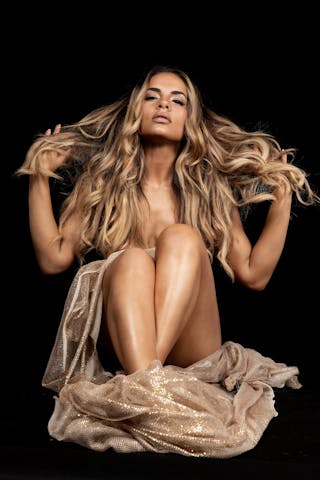Creating An Asexual Character For TV Showed Me We Have A Way To Go
Are you tired of the same old dating show storylines? Ready to see more diverse representation on your favorite TV shows? It's time to shake things up and explore new perspectives. Check out this eye-opening article on the swinger scene in Colchester here and discover a fresh take on relationships and sexuality. It's time for TV and dating to reflect the full spectrum of human experience, so let's keep pushing for progress and representation.
As a writer and avid TV watcher, I have always been on the lookout for diverse and inclusive representation in the media. So, when I heard that a popular TV show was introducing an asexual character, I was excited to see how they would handle this representation. However, what I saw on screen made me realize that we still have a long way to go when it comes to depicting asexuality in a respectful and accurate manner.
If you're looking for a new way to spice up your dating life, why not try out some strategy porn games by visiting Dating Tales today?
The Misrepresentation of Asexuality on TV
Explore the sensual world of footjobs and discover a new form of pleasure to try out.
When the asexual character was first introduced on the TV show, I was hopeful that they would be portrayed as a complex and multi-dimensional individual. However, what I saw was a one-dimensional stereotype that did not accurately reflect the experiences of asexual individuals. The character was portrayed as emotionless, robotic, and lacking in any romantic or sexual desires. This representation not only perpetuates harmful stereotypes about asexuality but also fails to capture the diversity and complexity of asexual experiences.
Explore Greek dating opportunities and connect with potential partners who share your cultural background and values.
The Importance of Representation
Representation matters, especially when it comes to marginalized communities such as the asexual community. Seeing oneself reflected in the media can have a profound impact on an individual's sense of belonging and self-worth. For asexual individuals, seeing accurate and respectful representation on screen can validate their experiences and help combat the erasure and invalidation they often face in society.
Creating an Asexual Character Done Right
So, what does accurate and respectful representation of asexuality look like? It starts with understanding that asexuality is a spectrum and that asexual individuals, like all people, are diverse and multi-dimensional. Asexual characters should be portrayed as fully fleshed-out individuals with their own desires, dreams, and experiences. They should not be reduced to stereotypes or used as a punchline for jokes.
Furthermore, it is important to show that asexual individuals can have fulfilling and meaningful relationships, whether they are romantic or platonic. By depicting asexual characters in a variety of relationships, the media can help challenge the misconception that asexuality equates to a lack of intimacy or connection.
Challenging Stigma and Misconceptions
Accurate and respectful representation of asexuality can also help challenge the stigma and misconceptions that surround asexuality. By portraying asexual characters in a positive and affirming light, the media can help educate the public about asexuality and promote greater understanding and acceptance.
Moving Forward
While the misrepresentation of asexuality on TV is disheartening, it also serves as a reminder that we still have work to do when it comes to creating inclusive and diverse media. As a writer, I am committed to creating authentic and respectful portrayals of asexual characters in my own work, and I hope to see more creators and producers follow suit.
In the meantime, it is important for asexual individuals to seek out and support media that accurately depicts their experiences. Whether it's through books, movies, or TV shows, finding representation that resonates with their lived experiences can be empowering and affirming.
In conclusion, the misrepresentation of asexuality on TV has shown me that we still have a way to go when it comes to creating inclusive and diverse media. Accurate and respectful representation of asexuality is crucial for challenging stigma, promoting understanding, and validating the experiences of asexual individuals. As we continue to advocate for greater diversity and inclusion in the media, I am hopeful that we will see more authentic and affirming portrayals of asexuality in the future.
- https://matchmaker-website.getweps.com/posts/my-best-sex-ever-was-with-my-exs-best-friend/
- https://chatting.themountaintopplay.com/posts/places-he-wants-to-have-sex-besides-bed-creative-sex-positions/
- https://hookupguide.timebombrecordings.com/posts/my-best-sex-ever-was-on-paypal/
- https://meet-women.thehottieandthenottie.com/posts/i-had-a-baby-and-then-fell-out-of-love-with-my-husband/
- https://dating-app.campsupernow.com/posts/when-does-sex-end/
- https://sex-chat.thehottieandthenottie.com/posts/femme-lesbians-dating-struggles-of-femme-women/
- https://sexting.thehottieandthenottie.com/posts/5-butt-plug-sex-positions-you-have-to-try/
- https://dating-app.getweps.com/posts/kristen-stewart-opens-up-about-shocking-sex-scenes/
- https://local-personals.thehottieandthenottie.com/posts/wand-vibrators-best-sex-wands/
- https://flirting.thehottieandthenottie.com/posts/how-will-dating-change-after-social-distancing/
- https://sex-chat.campsupernow.com/posts/intersex-definition-and-allyship-guide/
- https://singles.campsupernow.com/posts/lesbian-sex-positions-14-lesbian-sex-positions/
- https://dating-services.getweps.com/posts/what-this-muslim-sexual-health-educator-wants-you-to-know-about-islam-and-sex/
- https://local-personals.ua-sex.com/posts/my-best-sex-ever-was-with-a-pornstar/
